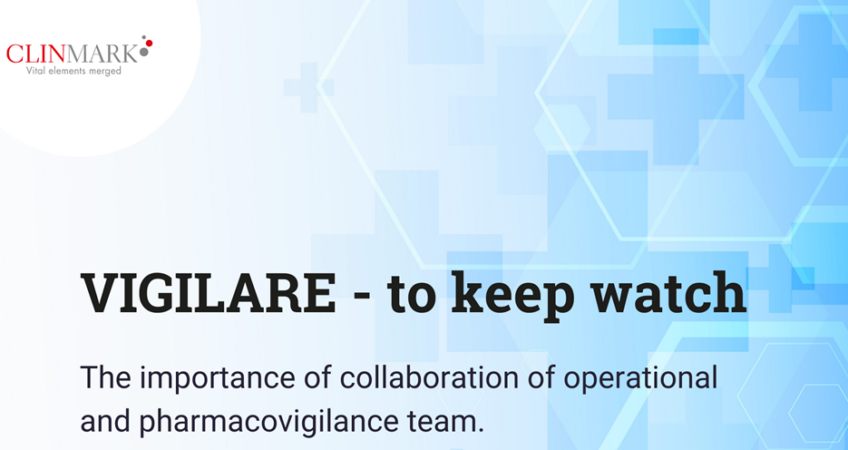The importance of collaboration of operational and pharmacovigilance team

Latin “vigilare” – to keep awake or alert, to keep watch – is usually cited as a duty of pharmacists, who have crucial role in medicine and entire health system. They are drug experts specifically trained in the drug field. Although pharmacists are the majority in the pharmacovigilance teams, they are increasingly being joined by other medical and life science graduates.
Pharmacovigilance as a discipline has been defined by the World Health Organization (WHO) as “The science and activities relating to the detection, assessment, understanding and prevention of adverse effects or any other possible drug-related problem.” This is the science of collecting, monitoring, investigating, assessing and evaluating information from healthcare providers and patients on the adverse effect of medicinal products, medical devices, biological products, herbalism, and traditional medicines.
An operational overview of drug safety / device surveillance begins with safety information coming from a different source such as study data, safety call centers, spontaneous reports, and literature reviews.
Pharmacovigilance team members during the life cycle of clinical study and/or clinical investigation constantly monitor the safety of the investigational medicinal product and/or investigational medical device. Just after a specific side effect is reported, the pharmacovigilance team enter the event into safety database, follow-up with the event to collect missing information and send these reports to regulatory authorities and other appropriate regulatory bodies in compliance with Good Pharmacovigilance Practice (GVP).
GVP brings together general guidance on the requirements, procedures, roles and activities in the field of pharmacovigilance, for both Marketing Authorization Holders and regulatory bodies. It incorporates international establishments within the framework of the International Council on Harmonization (ICH).
The members of the pharmacovigilance team interact regularly with study investigators, investigational site staff, clinical research associates (CRAs), clinical study project managers, data managers, biostatisticians, and medical writers. An added value is a joint discussion of the safety team and the medical writers already at designing the protocol / CIP stage. Inclusion of the pharmacovigilance team contributes to safety and assuring compliance with local and national regulations and standards.
Standardized safety practices for investigational medicinal products and investigational medical devices in clinical studies protocols and clinical investigational plans (CIPs) are limited. There is a constant need for in-depth analysis of safety risks coming from protocol / CIP complexity, study procedures and treatment details, the processes for packaging, storage, dispensing and /or use.
Considering that primary and/or secondary study objectives can be assigned within the specific side effects evaluation, the workshops on study data specific question forms of case report form (CRF) should involve safety experts as well. It is beneficial to get representatives of the safety team involved in User Acceptance Tests (UAT) especially in terms of AE / ADR and SAE related system functionalities.
Collaboration with the safety team during the study set-up is particularly important and should be maintained through the subsequent project steps. It is essential to get the project team sufficiently trained in safety matters. The involvement of the dedicated safety representatives in a specific project training program will certainly result in a better understanding of pharmacovigilance aspects and conscious diligence in preventing and minimizing potential errors.
Not only direct project team members should be trained in pharmacovigilance, but the entire team should be aware of the principles. The basic rule is ensuring all staff can recognize relevant safety information and forward them to safety personnel. It should be a multidisciplinary approach and a joint effort on behalf of the study participant with a common goal from all disciplines involved in the study. Such engagement helps improve lives all over the world. It is also rewarding in the sense that you know the effort you make has paid off, and there is a sense of achievement.
For Clinmark pharmacovigilance and safety has always been important and necessary service for our Sponsors and that is why efforts has been made to develop and strengthen this particular department within our organization. With experienced experts within pharmacovigilance department we can assist all processes required by our clients and our team is always VIGILARE!

